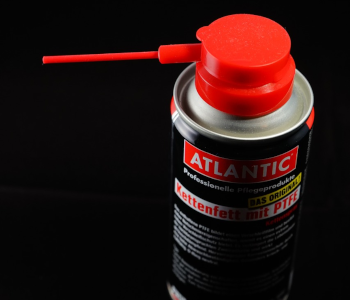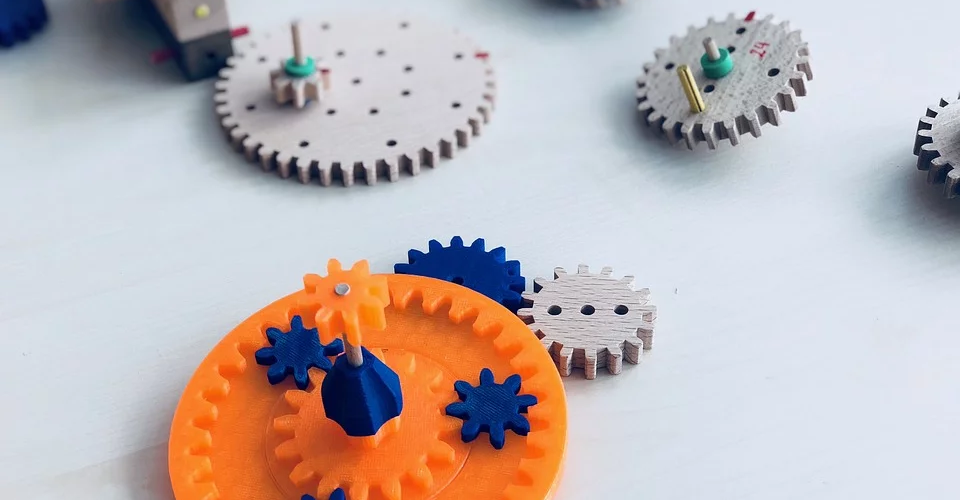How to Select Lubricants for Plastic Gears
Plastic is easily one of the most versatile materials that humans have developed and has revolutionized almost all industries and changed consumer habits, both for better and for worse. Being cheap and easy to manufacture, plastic quickly became an alternative to engineering materials such as steel, wood, or concrete. For these same reasons, some companies have taken to using plastic gears in place of metal.
Just as with standard metal gears, lubrication is an essential aspect of using plastic gears. However, the similarity of the chemistry of plastics to most lubricants can prove to be problematic. What lubricants are appropriate for plastic gears? Are lubricants even absolutely necessary?
Why are plastic gears being used?

At first glance, plastic may seem like an impractical material for gears. After all, they are much less durable and are more prone to wear and tear compared to metals. However, the fact remains that plastic gears are essential components in many commercial and industrial facilities. Nowadays, many food processing plants, chemical manufacturers, and medical equipment use plastic gears to varying degrees.
Plastic gears excel in areas where metals are particularly vulnerable. They are cheap, easy to make, lightweight, operate quietly, and do not rust. Modern developments in plastic manufacturing technology have made plastic gears an even more viable replacement in recent years, narrowing the gap in the performance of plastic and metal parts.
The lightweight characteristic of plastics means that they carry less inertia when they move, which allows for better control in their movements. This has made plastic gears the preferred technology for high-precision applications, such as equipment used for aerospace travel or by the military.
Although plastics lack the rigidity and stress resistance of metals, the ability of plastics to deform under stress helps improve their life spans. When each tooth of a plastic gear locks with another gear, the material at the point of contact slightly deforms and distributes the load over a wider area. Through this principle of load-sharing, plastic gears can resist wear and tear and remain operational for longer.
Of course, plastic gears are not suitable for all applications. Plastics have a drastic reaction to extreme temperatures, affecting critical parameters such as size, strength, and stiffness. Exposure to excessive moisture can cause a plastic gear to swell, while plastic can be quickly degraded when exposed to certain chemical compounds.
What does a lubricant do for plastic gears?
The best way to emphasize the importance of lubrication is to describe what happens to gears when they work without being lubricated. When a set of gear teeth come into contact, the point of contact experiences compressive stress, which propagates and moves as the gear turns. Because of repeated and sustained compressive stress of the teeth, the plastic material can experience any of the following:
- Heat generation
- Increased friction
- Increase in energy needed to continue turning the gear
- Wearing down of the external surface
- Accelerated erosion due to free debris
- Exposed surface irregularities
Aside from accelerating the rate at which plastic gears get worn down, the absence of lubrication also makes the operations of plastic gears less efficient. Over the long run, investing in a good lubrication system pays for itself with how much it reduces downtime and the need for parts replacement.
What does a lubricant do, exactly? Basically, it provides a very thin film that separates the two surfaces of gear teeth, allowing a gear to turn without the teeth making direct contact. Lubricants also have a lower coefficient of friction than the plastic material of the gears, reducing the work lost to friction and heat generation.
Is lubrication necessary for plastic gears?

The value of lubricants is recognized by virtually anyone who has ever worked with gears. They slow down the rate at which gear parts deteriorate, prevent the equipment form heating up, and allow for gears to operate using the least amount of work possible. However, plastics are a special case for two reasons: standard petroleum-based lubricants cannot be used for plastic gears, and some plastic gears are designed to be used without lubricants.
Some plastic gears can be embedded with lubricating materials, such as PTFE, silicone, or graphite. These are called “internal lubricants” and significantly the friction coefficient at the surface of plastic gears. However, there are certain operating conditions that benefit from the use of an external lubricant even if the plastic gears in use already have internal lubricants embedded into them.
However, the matter of chemical compatibility is highly critical when it comes to plastic gears. Plastics are more vulnerable to chemical degradation compared to metals, and this becomes even more apparent when we consider that most lubricants are petroleum-based. We’ll get into the details of chemical compatibility later, but a point can be made that lubricants can be beneficial to plastic gears only if the proper lubricant has been selected for the application.
How to choose a suitable lubricant for plastic gears
Given what we know about how important the suitability of a lubricant to plastic gears is in determining its performance, what are the characteristics that you should be on the lookout for? If you don’t want to leave it to chance, then you can opt to get a lubricant that can provide a compatibility chart where you can check for the material of your plastic gear. However, you can also do your own check by considering the following factors:
1. Chemical compatibility
The number one factor to consider is if the lubricant will be compatible with the material of the plastic gear. This means that contact between the lubricant and the gear will not cause the gear to deteriorate prematurely, which can make pits or cracks on the surface of the gear over a long time. Aside from the base oil of the lubricant, any additives must also be considered in this assessment.
As a general rule of thumb, any petroleum-based lubricant will damage plastic. This includes many greases, oils, and vaselines. Instead, most plastic manufacturers will recommend either a white lithium grease or a silicone-based grease. Lithium grease, made by a combination of fatty acids and either lithium hydroxide or lithium carbonate, is much more common.
When designing a system that uses plastic gears, it may be worth knowing which plastics are the most reactive and are most prone to chemical breakdown. Reactive plastics include polystyrene, ABS resins, polycarbonate, polyvinyl chloride, polyphenylene oxides, and polysulfone. On the other hand, nylon, polyesters, polyethylene, polypropylene, and terephthalate polyesters are known to be highly chemically stable.
2. Thermal stability
When it comes to the thermal stability of a lubricant, you will want to consider both ends of the spectrum. At low temperatures, some lubricants might lose on their film-forming capabilities due to increased viscosity. However, some lubricants may start leaking out of the system when exposed to high temperatures. Even worse, some compounds can start breaking down completely outside of their prescribed temperature range. When assessing the thermal stability of a lubricant, the working conditions for your plastic gears will need to be heavily considered.
3. Good lubricity
A low friction coefficient is one of the important characteristics of a good lubricant. In fact, a good lubricant should thrive in the operating conditions for which it was meant for – even in a high-stress environment.
4. Suitable viscosity
A lubricant must be viscous enough to form a thin and even oil film that separates the moving parts of a gear. The protective film needs to be consistent, distributed evenly across the surface of the gear, be able to get into small recessed areas, and have minimum squeeze-out even when subjected to stress.
One thing worth mentioning is that plastic gears with embedded internal lubricants, such as PTFE or silicone, may hamper the film-forming ability of external lubricants. For this reason, most designers have to choose between using plastic gears with internal lubricants or using external lubricants with standard plastic gears with no embedded special compounds.
Final thoughts
The versatility of plastic as a material for engineering may be surprising for some, especially those who know plastic as being merely used for consumer goods. Plastic, being a deformable and cheap material, can be made suitable for various manufacturing methods, such as in gears that convey materials or drive machines.
However, the chemical composition of plastic gears means that engineers and designers need to be careful about the type of compounds that come in contact with them. This includes lubricants – compounds that form a very thin film between gear parts that come in contact. Lubricants being an essential ingredient in gear operations, it must be ensured that they do not have any deleterious effects on the plastic material.


A Jolly Good article. Written very well and fully covers the subject, and also mentions possible problems.